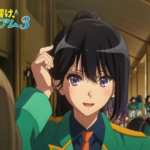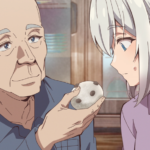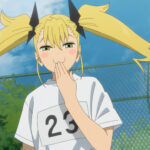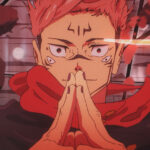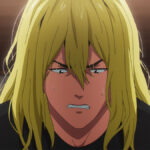© 2015 THE BOY AND THE BEAST FILM PARTNERS
Mainstream anime is most often targeted towards, and prominently features, younger demographics — children, adolescents, and to a lesser degree, college-age students. As a lifelong anime fan, I’ve gradually aged out of these designations, and find myself with a young family of my own. I enjoy sharing age-appropriate anime with my kids, but where’s the anime targeted towards the, uh, more… “mature” anime fan? (And no, I don’t mean hentai.) Even though growing up is inevitable, I don’t believe we must discard the passions of our youth to become boring adults. Anime is a fantastic, expressive art medium that I love with all my heart, and want to keep loving. What’s out there for someone like me?
Whether you’re a fan of his work or not, it’s impossible to deny that Mamoru Hosoda‘s movies reflect his singular identity as a filmmaker. His directorial career began with a couple of Digimon short films, butchered and repackaged in the West as Digimon — The Movie, hardly the most promising debut. Next came his One Piece movie Baron Omatsuri and the Secret Island, never localized in English. Since his international breakthrough with 2006’s The Girl Who Leapt Through Time, he’s become one of modern cinematic anime’s main pillars, equal to Makoto Shinkai in terms of name recognition. Whereas Shinkai’s main obsession is frustrated adolescent romance, with pining characters separated by time and/or space, Hosoda has made the genre of familial drama his own. As a father and family man, I find much to enjoy and identify with in Hosoda’s works. I feel seen.
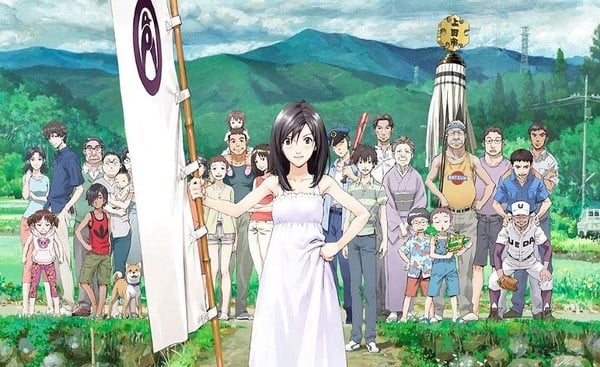
© 2009 SUMMERWARS FILM PARTNERS
While The Girl Who Leapt Through Time features a more conventional high school anime setting, albeit with fantasy time-travel mechanics, with his next (and in my opinion) best film Summer Wars (2009), Hosoda begins to dig deep into how our personalities are shaped by our upbringing, by our family bonds (or lack of them).
Summer Wars follows seventeen-year-old Kenji Koiso, a geeky student hoodwinked into accompanying his mischievous eighteen-year-old female friend Natsuki Shinohara to a private extended family gathering, as her fake fiancé. Kenji’s terror at meeting Natsuki’s enormous, rambunctious family painfully evokes memories of my own experiences as a seventeen-year-old first meeting my girlfriend’s (now wife’s) similarly voluminous traditional Roman Catholic family. For those not accustomed to large families, the noisiness, nosiness, and complete lack of privacy when thrust into the middle of one can be overwhelming.
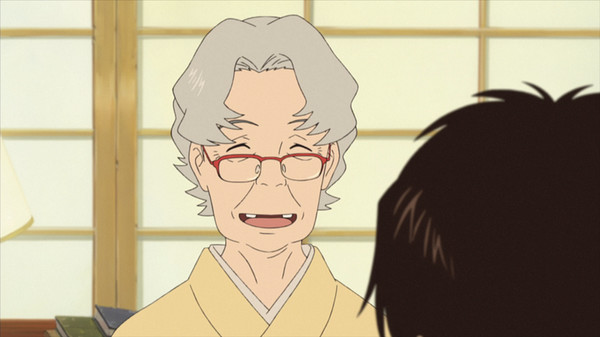
© 2009 SUMMERWARS FILM PARTNERS
Hosoda nails the complex dynamics that make the Jinnouchi family (of which the Shinoharas are but a tiny branch) so convincing and familiar. Natsuki’s elderly great-grandmother is a formidable, stern matriarch — a plain-spoken, no-nonsense woman to whom everyone else pays deference, the glue that seemingly holds everyone together. She reminds me of my own grandmother. Granny’s death partway through the film sends a shockwave through the extended cast, but despite their loss, the family remains tight-knit, demonstrating their strength originates not only from one overly-important member. I particularly appreciate how Hosoda portrays the differences in reactions between each family member— everyone has their own way of processing grief, none of which is necessarily “wrong”.
All family relationships inherently encompass conflict, and the larger the family, the more likely there are to be grudges, unspoken disagreements, hurt feelings, or even open emotional warfare. The Jinnouchis are no different, with multi-generational trauma coloring the others’ perception of itinerant “black sheep” Wabisuke (Natsuki’s cool and mysterious but sullen uncle). His admittedly contrived links to the wider plot involving rogue artificial intelligence and societal collapse allow the family drama to remain in focus, despite the combined cyberspace/real-world apocalypse erupting in the background.
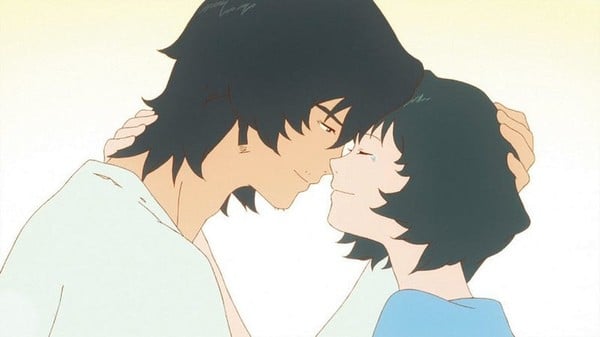
© 2012「おおかみこどもの雨と雪 」製作委員会
Whereas Summer Wars examines families on the macro level, Hosoda’s next movie, Wolf Children (2012), instead focuses exclusively on a tiny nuclear family, struggling alone in the world, without support from an army of kin. Early twenty-something student Hana meets and falls in love with an unnamed wolf-man, their relationship results in her pregnancy with twins. His life is cruelly stolen from Hana by a senseless, tragic accident, the wolf-man leaves her alone to raise two hybrid infants who randomly transform back and forth between human and wolf bodies. Harangued by social services and unwilling even to engage with medical services, Hana leaves her cramped city apartment to purchase a remote farm steading far from prying eyes. We then witness the growth of her children from infancy to adolescence.
I’ve read criticisms of Wolf Children that claim Hana is some sort of unrealistic, perfect, saint-like mother, but I completely disagree. Hosoda portrays her as a fragile, anxious, yet driven woman who prioritizes her unusual children’s welfare above all else. She makes mistakes, and struggles to control her semi-feral kids, yet summons incredible internal strength and resilience out of her anxiety, to strike out into the unknown. Despite her sacrificial parental love, she struggles to understand her children once they reach adolescence — especially her son who wishes to embrace his wolf identity over his human side.
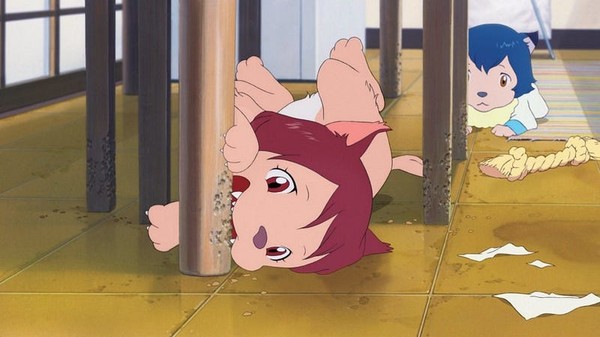
© 2012「おおかみこどもの雨と雪 」製作委員会
As a father, I recognize that no matter how strictly you may raise your children, they’re independent beings with their own desires and drives that can at times seen as incomprehensible, even alien. Wolf Children illustrates that disconnect perfectly via what some critics disregard as Hosoda’s “furry fetish”, his recurrent use of anthropomorphic animal people as allegorical constructs in his work. There is something different about Hana’s kids that even she barely understands, let alone others who haven’t known them since birth. As a parent of an autistic child, I find Wolf Children‘s exploration of this theme deeply resonant, and Hana’s final farewell to her son is emotionally devastating.
From an examination of single motherhood to a tale of foster fatherhood, 2015’s The Boy and The Beast is a completely different genre of movie. It’s a more overt fantasy, with fight sequences and exotic otherworlds, yet Hosoda’s concerns remain with parenthood and child-rearing. Nine-year-old Ren loses his mother following his parents’ divorce. Due to Japan’s draconian post-divorce child custody laws, he’s estranged from his father but refuses to live with his mother’s snobby family. After running away and wandering lost through night-time Shibuya, Ren is recruited as an apprentice by the monstrous beast-man Kumatetsu. Re-named “Kyuta”, Ren is spirited off to the Beast Realm, a world accessible from our own only via a magical backstreet labyrinth.
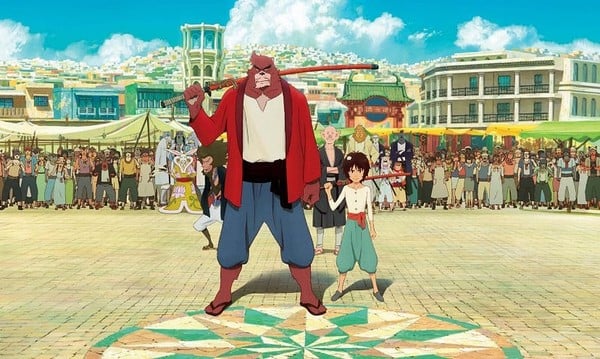
© 2015 THE BOY AND THE BEAST FILM PARTNERS
No one could possibly argue that Kumatetsu is any kind of perfect father figure. Violent, boorish, selfish, and intemperate, Kumatetsu frequently exasperates his unofficial foster child with his often irrational behavior. Kumatetsu’s main purpose for recruiting Ren is to teach him kendo, a traditionally non-lethal martial art. (Unsheathed swords are banned in the Beast Realm, so duels take place with blunt or sheathed weapons.) Unfortunately, Kumatetsu is a terrible teacher, and Ren learns only via covert observation and mimicry of his teacher’s moves.
Ren spends years under Kumatetsu’s flawed tutelage, sharing his home and his food, while they perpetually squabble with one another. Despite Kumatetsu’s fiery temperament and lack of nurturing sensitivity, he provides Ren with a stable, attentive parental figure who is always there for him. Kumatetsu lacks the emotional intelligence to demonstrate it, but it’s obvious he deeply loves Ren and shows it by driving him to better himself (mainly at fighting).
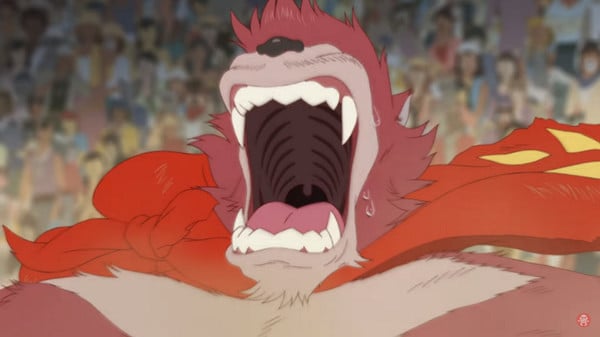
© 2015 THE BOY AND THE BEAST FILM PARTNERS
Kumatetsu’s rough-around-the-edges parenting style is counterbalanced by that of his rival Iozen, a noble boar-man who raises two sons together — one his biological child, the other a (disguised) human foundling. Iozen’s parental skills are much more in line with modern human values — he’s calm, encouraging, and seemingly wise. However, it’s his foster child who becomes a true “monster”, at least partially because of Iozen’s misguided intentions of protecting him by lying about his origin. Kumatetsu is never dishonest to Ren, who against all expectations matures into a surprisingly well-adjusted young man, a credit to his foster father.
Hosoda’s exploration of fatherhood in The Boy and The Beast is complex, demonstrating that many factors influence healthy child development. Fathers don’t need to be perfect, but they should at least be present in their children’s lives. Ren’s biological father was robbed of the chance to be there for him, through circumstances mostly outwith his control. Towards the end of the movie, once he and his son finally, awkwardly reconnect, he expresses heartfelt thanks to the man (beast) who raised Ren in his absence. As a professional whose role is to medically assess adults as prospective foster carers and adoptive parents for vulnerable children, I very much appreciate the subject matter explored in The Boy and The Beast. So many children lack willing, consistent parents. Perhaps Kumatetsu wouldn’t fare well under my assessment criteria, but I can’t fault him for a job well done.
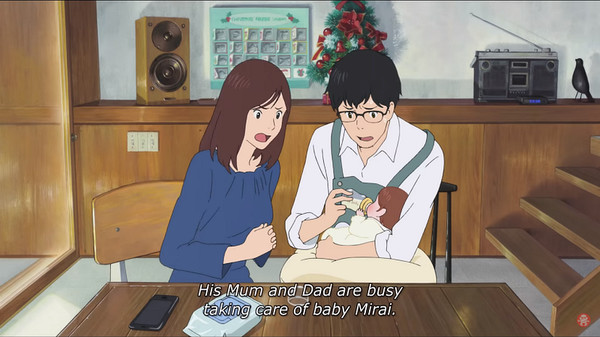
©2018 スタジオ地図
Of all Hosoda’s movies, 2018’s Mirai is probably his most divisive. It’s also his most unusually structured. Clearly written and directed by a man with bitter experience of the trials and frustrations of parenthood, Mirai centers on the struggle of four-year-old Kun to accept the arrival of his new baby sister, Mirai. Most criticism I’ve read of the film boils down to the fact that the main character is a typical preschooler — i.e. he’s a little shit. That does make him difficult to root for, but when you’re a parent it’s very easy to see your own horrid little monsters reflected in the selfish, flighty, vindictive, and distractible Kun. It takes a special kind of director to construct an entire movie seen through the eyes of a mostly unsympathetic miniature sociopath.
Hosoda’s films value emotional truth over the consistency of the plot, and Mirai is the best example of this. A series of barely-connected vignettes featuring fantasy sequences that are highly unlikely to be the product of an immature four-year-old’s imagination, it’s definitely an odd watch. What makes it worthwhile are the little recognizable moments of true humanity, both positive and negative — such as the struggles of Kun’s mother as she returns to her full-time job not long after giving birth, leaving her somewhat ineffectual husband at home in charge of two young children. You feel her reluctance to go, her barely sublimated guilt. Similarly, you feel the parental horror when Kun does the unthinkable and strikes his helpless baby sister out of jealousy and anger. The recognition that your own child can so callously harm another human being is a sobering experience that surely every parent must have seared into their memories.
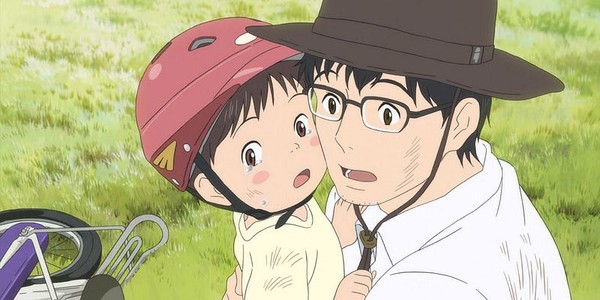
©2018 スタジオ地図
Family life is often about little triumphs though — I particularly love the scenes where Kun’s father is struggling to teach him to ride a bicycle — I’ve been there. It’s difficult when your child is an in-coordinate mess who can’t seem to stay upright for more than a few seconds! When Kun does finally succeed (following some supernatural help from a vision of his dead great-grandfather), such a seemingly small, simple moment fills the viewer with joy, a share in Kun’s accomplishment.
Mirai‘s disjointed narrative culminates in a stunning moment of transcendence, as Kun learns of his important role within his (beautifully visualized) family tree — not only as the child of his parents but as the responsible older brother to his baby sister. It teaches him to look outside of his own selfish needs and appreciate the joy of living for another person. I’m not ashamed to say this part made me cry. Perhaps this leaves viewers without children cold, they do say that becoming a parent changes your outlook on almost everything. I wonder if Mirai‘s greatest critics might do well to return to it later, once they’ve experienced parenthood for themselves.
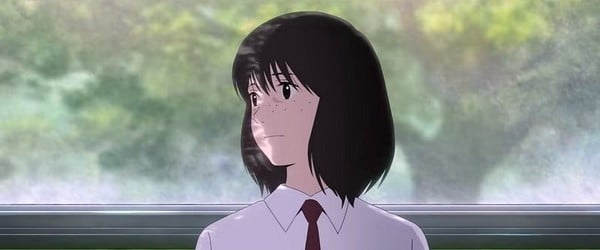
©2021 スタジオ地図
Hosoda’s latest, incredibly successful movie, is 2021’s BELLE, an animated musical lifting inspiration not just from Disney’s Beauty and the Beast, but also Hosoda’s previous works — most obviously the digital world featured in Summer Wars. Hosoda’s fascination with families and parenthood may not seem as immediately obvious in BELLE, as his return to a high school setting suggests themes more reminiscent of The Girl Who Leapt Through Time. However, while that earlier film made little reference to the family situations of its characters, BELLE grounds its story in familial trauma.
Protagonist Suzu mourns the loss of her altruistic, self-sacrificing mother and distances herself emotionally from her father and his attempts to connect with her. While the movie’s trailers push the virtual world “U” in which Suzu’s pink-haired avatar “Bell” resides, the majority of the plot (and running time) is spent in the mundane world, where grief, disappointment, and self-criticism are ubiquitous.
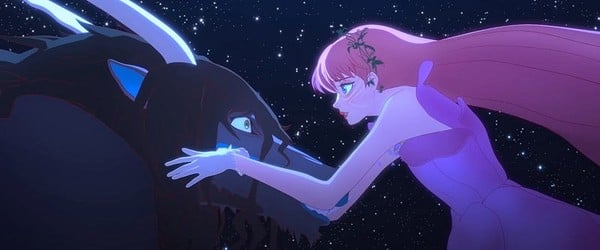
©2021 スタジオ地図
Although BELLE‘s Beauty and the Beast homages are prevalent (most obviously in the ballroom dancing scene), it’s very pointedly not a romance between Bell and The Beast. (Warning — enormous spoilers forthcoming.) While Suzu’s pink-haired avatar Bell is almost universally loved by the online denizens of “U”, the five-billion-subscriber-strong virtual world, “The Beast” is hated pariah. A violent, unpredictable, and feral edge lord, Beast rails against the world in general, griefing other users and spreading chaos as he acts out his hidden emotional pain.
It’s perhaps not a huge surprise that Beast’s true identity is Kei — a sullen, edgy teen. What is fascinating is how dark Hosoda is willing to go with Kei‘s background — trapped in a home with a verbally, emotionally, and physically abusive father, Kei puts himself in harm’s way to deflect his father’s attention from his (possibly neurodivergent) little brother. No wonder the kid is angry — the one person who should give him unconditional love and support is instead his abuser, his tormentor. The virtual world gives him an outlet for his seething maelstrom of negative emotions.
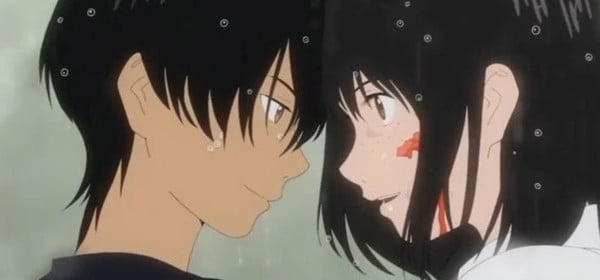
©2021 スタジオ地図
Suzu and Kei‘s real lives are diametric counterpoints to one another, much like their online personas. Suzu recognizes that her own parents have always loved and cared for her, and she desperately wants Kei to feel familial love like that too. Rather than pursuing a creepy romantic relationship with a younger teenager, Suzu instead sets out like a responsible elder sister to save Kei from his father.
Unfortunately, this is where the plot of BELLE falls apart. You can’t fix abusive families by putting on an online concert (no matter how many people sing along), nor by merely confronting an abuser on a single occasion can you change their behavior. Despite the powerful themes and final act emotional rollercoaster, this aspect of BELLE feels trite and underdeveloped. Although overall the film is mostly fantastic, Hosoda’s message is muddled by its messy conclusion.
Despite BELLE‘s ultimate narrative misstep, it remains an essential part of Hosoda’s oeuvre — I don’t think he’s made a single bad movie. His works can truly appeal to a multi-generational audience, with humor and action to entertain children, and deep, emotional themes to engage adults, especially those with family experiences they see reflected in Hosoda’s at times painfully human, flawed characters. I await his next movie with interest, (and tissues at the ready for the likely inevitable tears).
Kevin Cormack is a Scottish medical doctor, husband, father, and lifelong anime obsessive. He writes as Doctorkev on https://medium.com/anitay-official and appears regularly on The Official AniTAY podcast. You can also find him on Twitter @Herrdoktorkev. His accent is real.
